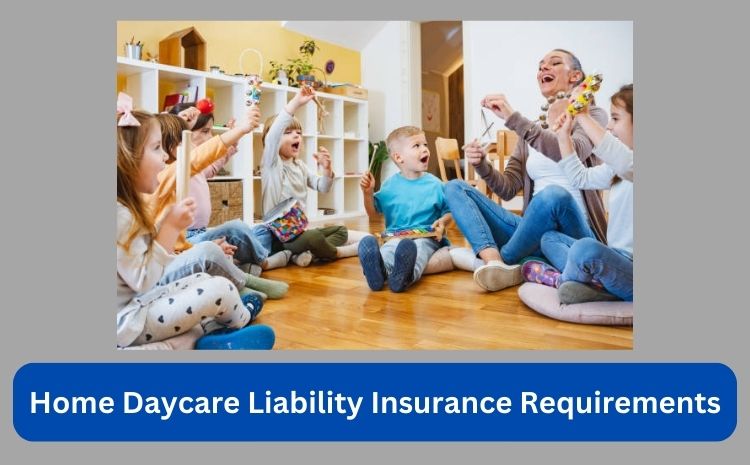Home Daycare Liability Insurance Requirements: Operating a home childcare business brings rewards caring for children, yet also legal responsibilities.
Home daycare liability insurance specifically addresses risks inherent to this profession.
While loving supervision remains the top priority, prudent risk management protects families, careers and livelihoods should unfortunate but inevitable incidents occur.
This comprehensive guide explores why liability coverage proves essential, policy components addressing daycare exposures, and best practices satisfying regulatory requirements for peace of mind.
Why is Home Daycare Insurance Required?
Home daycare providers face unique legal duties beyond parental care including:
- Premises Safety – Slips/falls and access to hazards like pools require mitigation through coverage.
- Medical Costs – Promptly paying for injuries via medical payments provisions regardless of fault.
- Lawsuits – Allegations of neglect/misconduct necessitate policy-provided defense resources.
- Continuity of Service – Major claims could shutter operations if self-insured versus policies spreading costs.
- Peace of Mind – Coverage relieves providers’ worries over unpredictable risks beyond control.
- Regulatory Compliance – Licensing mandates insurance demonstrating responsible risk transfer.
Appropriate protection shows due diligence meeting professional, compliance and security expectations supporting children entrusted to care.
Components of Home Daycare Liability Coverage
Most home daycare liability insurance packages contain these common coverage parts:
- General Liability – Bodily injury and property damage claims defended/paid as legally liable.
- Medical Payments – Limited medical costs following minor accidents paid directly to injured parties.
- Sexual/Physical Abuse Coverage – Allegations addressed through important liability protection.
- Additional Insureds – Automatically extends coverage to relative caregivers aiding operations.
- General Aggregate Limits – Commonly $300K-$500K+ annual aggregate cap on total claims.
- Occurrence Limits – Generally $100K-$300K for each individual accident/incident event.
Tailored policies shield youthserving businesses from unpredictable outcomes beyond providers’ control.
Home Daycare Risks Requiring Coverage
The nature of childcare uniquely exposes operations to various injury scenarios necessitating responses:
- Premises Liability – Slips/falls, access to pools or other home safety issues hurting kids or visitors.
- Vehicle-Related – Transporting children off-site for activities increases accident exposure.
- Field Trips – Outings introduce crowds/structures/surfaces with slip/security hazards.
- Sports/Playgrounds – Recess injuries commonly occur despite adequate supervision.
- Food Safety – Allergic reactions from snacks served or spoilage inducing illnesses.
- Illnesses – Contacting contagious infections through regular exposure/outbreaks.
Coverage defends against incidents inherent yet unintentional in professionally developing young minds.
Daycare Liability Policy Considerations
Beyond standard elements, specialists explore policy options addressing unique attributes:
- Number of Children – Limits scale up commensurate with increased headcounts’ heightened exposures.
- Vehicle Usage – Auto liability pertains if transporting kids necessitating compliant child-seats too.
- Property Values – Higher property values require additional property/liability protection.
- Water Hazards – Ensuring pool fencing/locks meet standards and operations exclude pools if non-compliant.
Policy Term – Longer-term policies versus 12-month options offer renewal flexibility.
Customized coverage keeps pace with evolving exposures professionally.
Establishing Adequate Coverage Levels
Appropriate liability thresholds hinge on weighing two core factors:
Number of Children – More kids correlate directly to increased likelihood/impact of claims.
State Licensing Requirements – Regulations dictate minimum required coverage amounts.
For example, many jurisdictions require:
- Up to 6 Children: $100K per occurrence
- 7-12 Children: $300K per occurrence
- 13+ Children: $500K+ per occurrence
Similarly, available limits may tier by headcounts insured such as $300K/$500K per occurrence along with $600K/$1M annual aggregates respectively.
Satisfying regulatory minimums ensures lawful operations while prudently mitigating financial risks.
Proactive Risk Management Practices
Supplementing liability coverage, providers empower safe environments through diligence including:
- Conducting Reference/Background Checks – Screening all household members and caregivers.
- Maintaining Medical Documentation – Keeping emergency contact/immunization records on file.
- Providing Developmentally Appropriate Supervision – Limiting distractions while children present.
- Securing Premises – Restricting access to pools, chemicals and other threats through barriers.
- Planning Daily Routines – Structured schedules enhance predictability minimizing incidents.
- Documenting Communications – Logging all injuries/incidents benefits defenses protecting operations.
- Obtaining Training – Continuing education strengthens skills supporting children’s individual needs.
Holistic strategies reinforce child safety, smooth operations and regulator satisfaction far exceeding minimal standards.
Conclusion on Home Daycare Liability Insurance Requirements
Home daycare represents a personal business caring for society’s most vulnerable individuals each day.
Prudent risk transfer protects this crucial work through unforeseen circumstances beyond providers’ influence.
Satisfying licensing obligations via specialized liability policies, combined with proactive risk oversight upholding even higher standards, sets an exemplary model.
Comprehensive protections establish sustainable childcare careers allowing full attention on nurturing each child responsibly entrusted to home environments.
Home daycare liability insurance requirements prove a cornerstone supporting this rewarding yet professionally regulated field.
